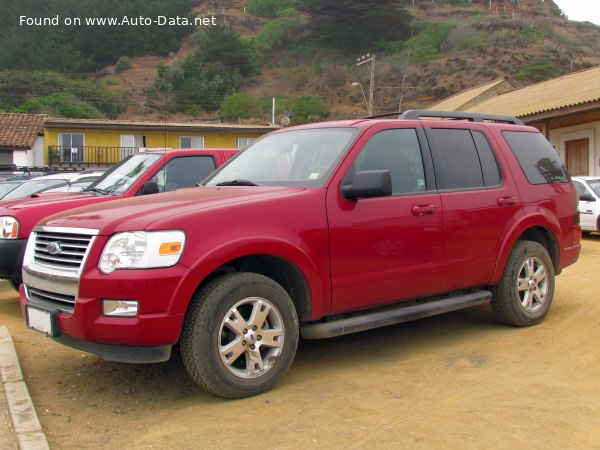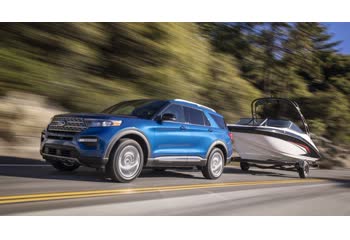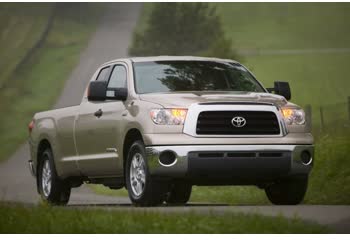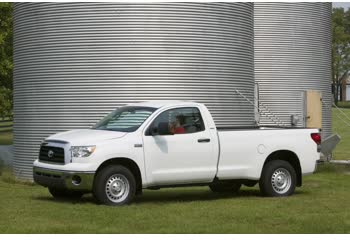Alles, was Sie über Spezifikationen und Leistung wissen müssen - Ford Forscher 2006 - 4.0i V6 (212 Hp)

Übersicht:
Welchen Hubraum hat ein Ford Forscher 2006?
Die Motorkapazität des Ford Forscher 2006 beträgt 3998.
Ford Forscher 2006 Wie viele PS?
Die Motorleistung des Ford Forscher 2006 beträgt 212 Hp @ 5100 rpm..
Allgemein:
Marke: Ford
Modell: Forscher
Generation: Forscher IV
Modifikation (Motor): 4.0i V6 (212 Hp)
Produktionsstart: 2006
Ende der Produktion: 2010
Antriebsstrangarchitektur: Verbrennungsmotor
Körpertyp:Sport Utility Vehicle (SUV)
Sitze: 5
Türen: 5
Motor:
Leistung: 212 PS @ 5100 U/min.
Leistung pro Liter: 53 PS/l
Drehmoment: 344 nm @ 3700 U/min.
Hubraum des Motors: 3998
Anzahl der Zylinder: 6
Motorkonfiguration: V-engine
Anzahl der Ventile pro Zylinder: 2
Kraftstoffeinspritzsystem: Multi-port manifold injection
Motoranstrengung: Naturally aspirated Motor
Motorölkapazität: 4.7 l
Kühlmittel: 11.5 l
Motorlayout: Vorne, Längs
Zylinderbohrung: 100.33 mm
Kolbenhub: 84.3 mm
Kompressionsverhältnis: 9.7:1
Leistung:
Kraftstofftyp: Benzin
Kraftstoffverbrauch (Wirtschaftlichkeit) – innerorts: 14.7 l/100 km
Kraftstoffverbrauch (Wirtschaftlichkeit) – außerorts: 11.2 l/100 km
Beschleunigung 0 - 100 km/h: 9.4 Sek
Beschleunigung 0 - 62 Meilen pro Stunde: 9.4 Sek
Höchstgeschwindigkeit: 158 km/h
Verhältnis von Gewicht zu Leistung: 9.4 kg/PS, 106.3 PS/Tonne
Verhältnis von Gewicht zu Drehmoment: 5.8 kg/Nm, 172.4 Nm/Tonne
Beschleunigung 0 - 60 Meilen pro Stunde: 8.9 Sek
Platzangebot:
Leergewicht (kg): 1995
Max. Gewicht (kg): 2595
Maximale Belastung (kg): 600
Platz im Kofferraum (Kofferraum) – maximal: 2492 l
Platz im Kofferraum (Kofferraum) – Minimum: 391 l
Fassungsvermögen des Kraftstofftanks: 85 l
Abmessungen:
Länge: 4813 mm
Breite: 1832 mm
Höhe: 1814 mm
Radstand: 2890 mm
Vordere Spur: 1547 mm
Hintere (hintere) Spur: 1555 mm
Antrieb, Fahrwerk und Bremsen:
Antriebsstrangarchitektur: The Internal combustion Motor (ICE) drives the rear wheels of the vehicle.
Antriebsrad: Rear wheel drive
Anzahl der Gänge und Art des Getriebes: 5 gears, manual transmission
Vorderradbremsen: Ventilated discs
Hintere Bremsen: Disc
Assistenzsysteme: ABS (Anti-lock braking system)
Lenkungstyp: Steering rack and pinion
Reifengröße: 235/70 R16
Vorderradaufhängung: Torsion
Hinterradaufhängung: Coil Frühling
Siehe auch

Letzte Generation.
Die Produktion begann im Jahr 2019 bis 2024

Gleiches Produktionsjahr und nahezu gleicher Hubraum.
Die Produktion begann im Jahr 2006 bis 2010

Gleiches Produktionsjahr und nahezu gleicher Hubraum.
Die Produktion begann im Jahr 2006 bis 2009

Gleiches Produktionsjahr und nahezu gleicher Hubraum.
Die Produktion begann im Jahr 2006 bis 2009

Kommentar schreiben